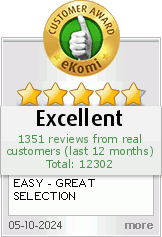COVID-19’s Effect on Cut Flower Shipping
One of the most memorable side-effects of the pandemic was the mad dash for toilet paper as the precious white rolls seemed to disappear from all the grocery shelves. And it wasn’t just this bathroom essential that became scarce in March 2020, when U.S. citizens began to take the Coronavirus pandemic seriously. People told stories of empty meat cases and there was no yeast to be found when everyone who was staying home started baking their own bread.
The floral industry was not immune to the shipping delays that resulted from the pandemic. Fresh cut flowers and many other hard-goods that designers use to fulfill orders for their customers were delayed or completely unavailable. The floral industry relies heavily on international trade, making it tough at a time when the world has had to get a little bit smaller.
Where Do Cut Flowers Come From?
It is first important to consider where cut flowers come from. Historically, the Netherlands has always been the hub of wholesale fresh flowers throughout the world. Many types of flowers are grown in the Netherlands, and their famous flower markets also act as a “middle man,” by importing and re-exporting 40% of the world’s flowers.
Beginning in the 1970s, though, African and Latin American countries also became major players in flower farming. Their warm climates with ideal growing conditions were a natural choice for flower farming when the 1973 oil crisis hit, making it impossible to heat Holland’s chilly greenhouses. Europe began to trade with farmers in Israel and Morocco and the U.S. purchased flowers from nearby Central and South American growers.
Today, most flowers are produced in the Netherlands, Ecuador, Colombia, Kenya and Ethiopia. However, the European Union and United States are the greatest consumers of fresh flowers, with 90% of their flowers being imported. Proper and timely shipping is very important for healthy flowers. The blooms are shipped using a “cold-chain” of refrigerated planes, trains, and trucks that get the flowers from the farm to the local flower shop within 24-48 hours.
Slower Shipping and Higher Demand
When COVID-19 began, it was clear that shipping would be affected. Prompt shipping relies on a circular schedule of loading goods, traveling to the destination, unloading the cargo, and filling the containers with new items for the next destination. This is just the kind of behavior, though, that had to be put on hold to stop the continued spread of the Coronavirus. That meant that shipping containers piled up at ports, fewer ships sailed, and the number of port staff was greatly reduced to comply with social distancing. When manufacturers did try to resume shipping, many found they lacked the containers to carry their goods because they were locked down at foreign ports. Demand was much higher than supply and shipping became very expensive.
In the floral industry, delayed shipping caused major problems for the fresh products that lose 15% of their value for every extra day spent travelling. At the same time, demand also sky-rocketed. Many people were not able to travel to visit loved ones, or even gather with nearby relatives. Holidays, birthdays, and milestones passed where people remained separated by household, but they wanted to send beautiful floral arrangements and gifts to let their friends and family know that they were thinking of them.
How Flower Shops Adapted to COVID-19
Kremp Florist was unable to receive their usual supply of flowers from overseas where they were grown. Glass vases made in China were also limited during the pandemic. But the flower shop was able to adapt in the following ways to help spread cheer during one of the toughest times in people’s lives.
Communication: Kremp Florist communicated with customers about which products were available for sale. There were still many types of beautiful flowers for customers to choose from, while others were temporarily unavailable.
Daily Flower Delivery: The florist tapped into a wide variety of sources to receive fresh flowers daily.
Original Designs: Kremp Florist’s designers used their creativity to imagine new and original flower arrangements using the flowers, greenery, vases, and supplies that were available during the pandemic.
Delivering Packages: Drivers wearing the appropriate protective equipment kept customers and employees safe while delivering anniversary flowers, birthday bouquets, and holiday arrangements to brighten someone’s day.
This article was published by Chad Kremp



